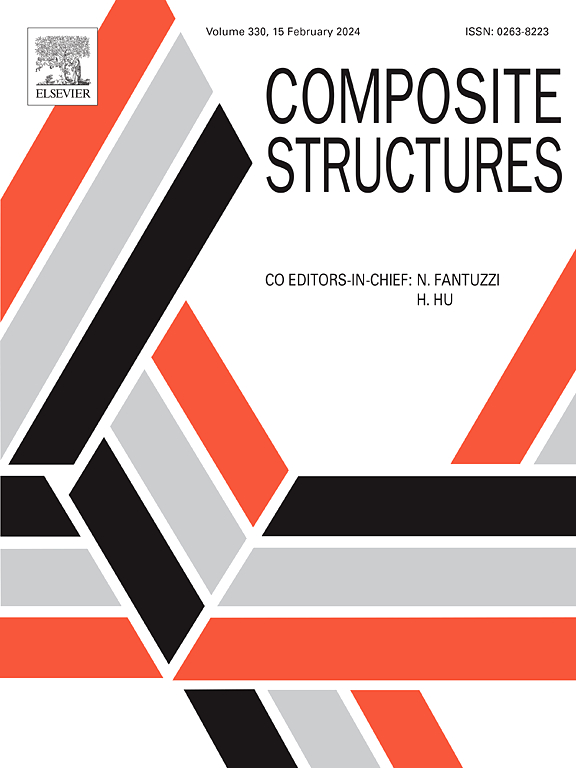用于数据驱动计算同质化的具有误差缓解功能的量子计算
IF 6.3
2区 材料科学
Q1 MATERIALS SCIENCE, COMPOSITES
引用次数: 0
摘要
作为物理学和力学的交叉前沿,量子计算在计算力学领域展现出巨大潜力。然而,由于现有硬件的限制,量子硬件噪声仍然是实现精确模拟结果的关键障碍。在本文中,我们在数据驱动的计算均质化中集成了误差抑制量子计算,采用零噪声外推(ZNE)技术来提高量子计算的可靠性。具体来说,零噪声外推(ZNE)技术可用于减轻两种量子距离计算算法(即基于交换的算法和基于H的算法)中的量子硬件噪声,从而提高数据驱动计算均质化的整体准确性。我们利用量子计算机模拟器 Qiskit 对二维复合 L 形梁和三维复合圆柱壳进行了多尺度模拟,结果验证了所提方法的有效性。我们相信,这项工作为在计算力学中使用量子计算迈出了充满希望的一步。本文章由计算机程序翻译,如有差异,请以英文原文为准。
Quantum computing with error mitigation for data-driven computational homogenization
As a crossover frontier of physics and mechanics, quantum computing is showing its great potential in computational mechanics. However, quantum hardware noise remains a critical barrier to achieving accurate simulation results due to the limitation of the current hardware. In this paper, we integrate error-mitigated quantum computing in data-driven computational homogenization, where the zero-noise extrapolation (ZNE) technique is employed to improve the reliability of quantum computing. Specifically, ZNE is utilized to mitigate the quantum hardware noise in two quantum algorithms for distance calculation, namely a Swap-based algorithm and an H-based algorithm, thereby improving the overall accuracy of data-driven computational homogenization. Multiscale simulations of a 2D composite L-shaped beam and a 3D composite cylindrical shell are conducted with the quantum computer simulator Qiskit, and the results validate the effectiveness of the proposed method. We believe this work presents a promising step towards using quantum computing in computational mechanics.
求助全文
通过发布文献求助,成功后即可免费获取论文全文。
去求助
来源期刊

Composite Structures
工程技术-材料科学:复合
CiteScore
12.00
自引率
12.70%
发文量
1246
审稿时长
78 days
期刊介绍:
The past few decades have seen outstanding advances in the use of composite materials in structural applications. There can be little doubt that, within engineering circles, composites have revolutionised traditional design concepts and made possible an unparalleled range of new and exciting possibilities as viable materials for construction. Composite Structures, an International Journal, disseminates knowledge between users, manufacturers, designers and researchers involved in structures or structural components manufactured using composite materials.
The journal publishes papers which contribute to knowledge in the use of composite materials in engineering structures. Papers deal with design, research and development studies, experimental investigations, theoretical analysis and fabrication techniques relevant to the application of composites in load-bearing components for assemblies, ranging from individual components such as plates and shells to complete composite structures.
 求助内容:
求助内容: 应助结果提醒方式:
应助结果提醒方式:


